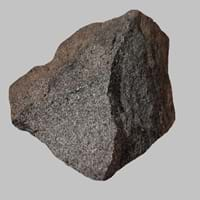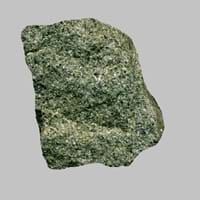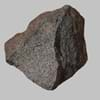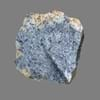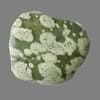Definition
Theralite is a plutonic hylocrystalline igneous rock consisting of augite, olivine, calcic plagioclase and nepheline
Greywacke is defined as a dark coarse-grained sandstone rock which contains more than 15 per cent clay
Discoverer
Unknown
Unknown
Etymology
From Greek to pursue
From German Grauwacke, from grau grey + wacke
Class
Igneous Rocks
Sedimentary Rocks
Sub-Class
Durable Rock, Hard Rock
Durable Rock, Hard Rock
Group
Plutonic
Not Applicable
Other Categories
Fine Grained Rock, Opaque Rock
Fine Grained Rock, Opaque Rock
Texture
Phaneritic
Clastic
Color
Dark Grey to Black
Beige, Black, Brown, Colourless, Cream, Dark Brown, Green, Grey, Light Green, Light to Dark Grey, Pink, Red, White, Yellow
Durability
Durable
Durable
Scratch Resistant
Yes
Yes
Appearance
Veined and Shiny
Dull
Interior Uses
Decorative Aggregates, Flooring, Interior Decoration
Decorative Aggregates, Floor Tiles, Flooring, Homes, Interior Decoration
Exterior Uses
As Building Stone, As Facing Stone, Garden Decoration, Office Buildings
As Building Stone, As Facing Stone, Garden Decoration, Office Buildings, Paving Stone
Other Architectural Uses
Curbing
Curbing, Whetstones
Construction Industry
As Dimension Stone, Building houses or walls, Cement Manufacture, Construction Aggregate, for Road Aggregate
Building houses or walls, Cement Manufacture, Construction Aggregate, for Road Aggregate, Raw material for the manufacture of mortar
Medical Industry
Not Yet Used
Not Yet Used
Antiquity Uses
Artifacts, Monuments, Sculpture
Artifacts, Sculpture, Small Figurines
Commercial Uses
Cemetery Markers, Commemorative Tablets, Creating Artwork, Laboratory bench tops, Jewelry, Sea Defence, Tombstones
As armour rock for sea walls, Petroleum reservoirs, Sea Defence, Tombstones
Types
Teschenite and Essexite
Not Available
Features
Smooth to touch
Available in Lots of Colors and Patterns, Generally rough to touch, Non-vesicular, Veined
Archaeological Significance
Monuments
Used
Not Yet Used
Famous Monuments
Data Not Available
Not Applicable
Famous Sculptures
Data Not Available
Data Not Available
Pictographs
Not Used
Not Used
Petroglyphs
Not Used
Not Used
Formation
Theralite is a fine-grained, hard rock which is a type of metasomatite, essentially altered basalt. It forms with or without crystallization, either below the surface as intrusive rocks or on the surface as extrusive rocks.
Graywacke rock is a type of sedimentary rock, which is also known as immature sandstone, which is indurated, dark grey and consisting of poorly sorted angular to sub-angular, sand-sized grains.
Mineral Content
Augite, Olivine, Plagioclase, Pyroxene
Augite, Biotite, Calcite, Chlorite, Clay, Clay Minerals, Feldspar, Micas, Muscovite or Illite, Plagioclase, Pyroxene, Quartz
Compound Content
Aluminium Oxide, CaO, Chromium(III) Oxide, Iron(III) Oxide, Potassium Oxide, MgO, Sodium Oxide, Silicon Dioxide, Sulfur Trioxide
Aluminium Oxide, NaCl, CaO, Chromium(III) Oxide, Iron(III) Oxide, FeO, Potassium Oxide, Magnesium Carbonate, MgO, MnO, Sodium Oxide, Phosphorus Pentoxide, Silicon Dioxide, Titanium Dioxide
Types of Metamorphism
Cataclastic Metamorphism, Contact Metamorphism, Hydrothermal Metamorphism, Impact Metamorphism, Regional Metamorphism
Not Applicable
Types of Weathering
Biological Weathering
Biological Weathering, Chemical Weathering
Types of Erosion
Chemical Erosion, Coastal Erosion, Glacier Erosion, Water Erosion, Wind Erosion
Coastal Erosion, Sea Erosion, Wind Erosion
Grain Size
Fine Grained
Angular and Fine
Fracture
Uneven, Splintery or Conchoidal
Conchoidal
Porosity
Highly Porous
Highly Porous
Luster
Waxy and Dull
Dull
Cleavage
Non-Existent
Perfect
Specific Gravity
2.5-2.8
2.2-2.8
Transparency
Translucent to Opaque
Opaque
Density
2.7 g/cm3
2.6-2.61 g/cm3
Specific Heat Capacity
Not Available
Resistance
Impact Resistant, Pressure Resistant, Wear Resistant
Heat Resistant, Impact Resistant, Pressure Resistant
Deposits in Eastern Continents
Asia
India, Russia
China, India, Kazakhstan, Mongolia, Russia, Uzbekistan
Africa
South Africa
Namibia, Nigeria, South Africa
Europe
Germany, Greece, Italy, Scotland, Turkey
Austria, Denmark, Germany, Great Britain, Netherlands, Norway, Poland, Sweden, Switzerland, United Kingdom
Others
Greenland, Mid-Atlantic Ridge
Greenland
Deposits in Western Continents
North America
Canada, USA
Canada, USA
South America
Bolivia, Brazil, Colombia, Venezuela
Brazil
Deposits in Oceania Continent
Australia
New Zealand, Queensland
New South Wales, New Zealand
Theralite vs Greywacke Characteristics
Though some rocks look identical, they have certain characteristics which distinguish them from others. Characteristics of rocks include texture, appearance, color, fracture, streak, hardness etc. Theralite vs Greywacke characteristics assist us to distinguish and recognize rocks. Also you can check about Properties of Theralite and Properties of Greywacke. Learn more about Theralite vs Greywacke in the next section. The interior uses of Theralite include Decorative aggregates, Flooring and Interior decoration whereas the interior uses of Greywacke include Decorative aggregates, Floor tiles, Flooring, Homes and Interior decoration. Due to some exceptional properties of Theralite and Greywacke, they have various applications in construction industry. The uses of Theralite in construction industry include As dimension stone, Building houses or walls, Cement manufacture, Construction aggregate, For road aggregate and that of Greywacke include Building houses or walls, Cement manufacture, Construction aggregate, For road aggregate, Raw material for the manufacture of mortar.
More about Theralite and Greywacke
Here you can know more about Theralite and Greywacke. The life cycle of a rock consists of formation of rock, composition of rock and transformation of rock. The composition of Theralite and Greywacke consists of mineral content and compound content. The mineral content of Theralite includes Augite, Olivine, Plagioclase, Pyroxene and mineral content of Greywacke includes Augite, Biotite, Calcite, Chlorite, Clay, Clay Minerals, Feldspar, Micas, Muscovite or Illite, Plagioclase, Pyroxene, Quartz. You can also check out the list of all Igneous Rocks. When we have to compare Theralite vs Greywacke, the texture, color and appearance plays an important role in determining the type of rock. Theralite is available in dark grey to black colors whereas, Greywacke is available in beige, black, brown, colourless, cream, dark brown, green, grey, light green, light to dark grey, pink, red, white, yellow colors. Appearance of Theralite is Veined and Shiny and that of Greywacke is Dull. Properties of rock is another aspect for Theralite vs Greywacke. The hardness of Theralite is 7 and that of Greywacke is 6-7. The types of Theralite are Teschenite and Essexite whereas types of Greywacke are Not Available. Streak of rock is the color of powder produced when it is dragged across an unweathered surface. The streak of Theralite and Greywacke is white. The specific heat capacity of Theralite is 0.74 kJ/Kg K and that of Greywacke is Not Available. Depending on the properties like hardness, toughness, specific heat capacity, porosity etc., rocks are resistant to heat, wear, impact, etc.Theralite is impact resistant, pressure resistant, wear resistant whereas Greywacke is heat resistant, impact resistant, pressure resistant.
